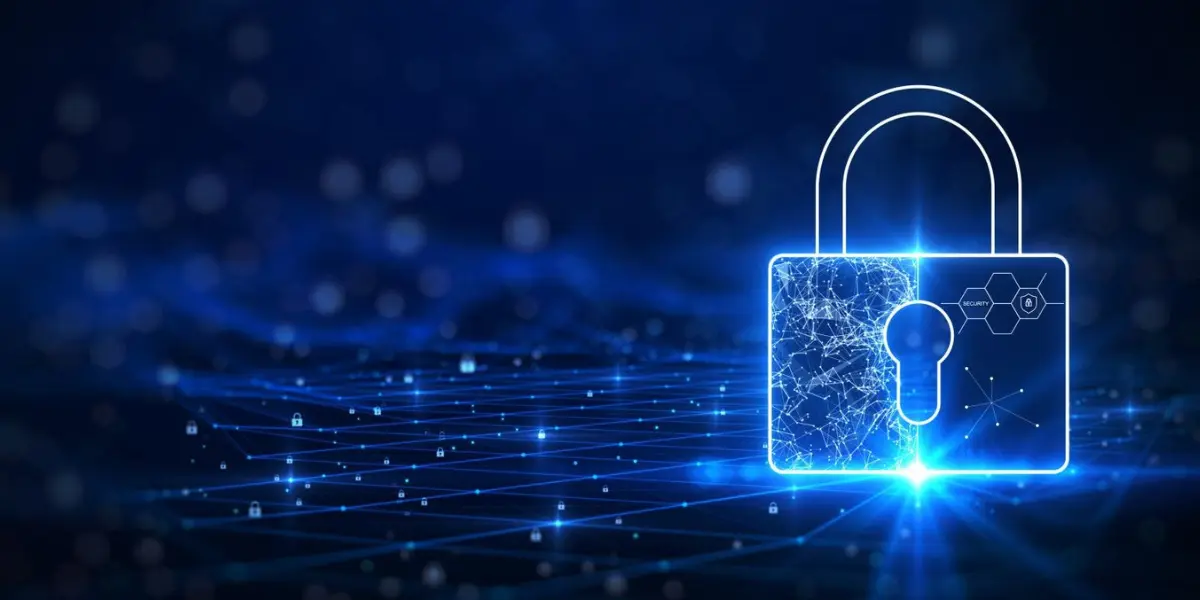Programmers and software developers may be experts in their scientific domain, but ask any of them, and they will let you know that software development is as much an art as it is a science. After all, when a team of coders creates software, it is nothing short of a creative synergy that emanates from them. So, if software code is an expression of the coder’s creativity, how can it be protected?
That’s where software copyright comes in. Copyright law protects all artistic expressions, and computer software falls under this purview. That’s why it is important for all programmers and developers to have a clear idea of how to protect software using copyright.
What is software copyright?
Software copyright is a type of intellectual property law that protects original works of authorship, including software and databases, in the same way as books, music, and other creative works. It gives the copyright owner exclusive rights to use, copy, distribute, and make derivative works based on the protected software or database. This protection encourages innovation and creativity by providing incentives to inventors, creators, and developers to continue creating new and innovative software solutions.
Copyright laws differ from country to country, but the essence in most cases remains the same. It requires originality and applies automatically as soon as the software or database is created. This means that the creator of the software or database owns the copyright unless they decide to assign or license the rights to someone else. In some cases, a team of people may collaborate to create a software program, and in those cases, the copyright ownership may be shared among the collaborators.
How does Software Copyright work?
The software copyright is automatic and applies as soon as the software is created and fixed in a tangible form, such as a source code or executable file, and this extends for 70 years in most cases. However, the extent of the copyright remains only in the code; the idea behind it cannot come under intellectual property protection.
The software copyright gives the exclusive rights to reproduce, distribute, and publicly display the software or database. This means that others cannot use or copy the software without the owner’s permission. The owner can license their software to others, granting them specific rights to use the software or database, in exchange for payment or other considerations.
Software copyright gives the software author the exclusive right to do or authorize any of the following:
- Make copies of the software
- Create derivative works based on the software
- Distribute copies of the software to the public
- Use the software publicly
- Display the software publicly
Why it is essential to protect copyright in software
Software is unique in the sense that it can not work without being copied. For a software program to run, it must be copied from any tertiary memory device to the system’s primary memory. This itself is an unavoidable act of copying.
However, such copying is not considered a crime as it is essential for the software to function. The problem arises when the software code is copied by a third party that aims to gain from such copying. Not only direct copying but the adaptation of software code into another computer programming language may also fall under copyright infringement.
To prevent this from happening, software developers and publishers distribute their software under different licenses. Despite that, any computer user knows that software piracy is currently a multi-billion dollar industry. The moment a new software application is created, hundreds of copycats surface, often with similar names and functionalities.
So, if you intend to protect your software against intellectual property theft, then it is essential that you know how to protect software using copyright.
What are the benefits of protecting copyright in software?
1. Effective ownership rights
Let’s face it: software takes time and resources to develop. So, it is only natural that the creators will want to protect the final product against intellectual property theft. After all, the code that you’ve written might be the only way to solve a particular problem. In case other developers get unfettered access to it, they can use it in any way without your permission.
This is where copyright comes in. When you get copyright protection for your software, this means you’re in complete control of the code’s ownership rights. Other developers cannot use the code without your permission. In this way, you exercise effective control over your creation.
2. Worldwide declaration
As we’ve already mentioned before, the moment your code’s in the compiler, you’re entitled to its copyright. Materializing copyright protection for your software is tantamount to declaring to the world that you’re the owner of the code. At this point, no one can get away with unauthorized copying of your code.
3. Makes it easier to claim damages
If you’re filing a lawsuit against another party for copyright infringement, then legal copyright makes it easier to claim damages. Today, given the easy methods for software distribution, claims can be as high as hundreds of thousands of dollars. Winning such claims is made easy with copyright.
4. You don’t have to worry about patents
In most countries, the law doesn’t allow the software to be patentable. In such a case, copyright laws are your only method to protect your software from unlawful use. What’s more, copyrighted software can give you better terms in different licensing agreements. These are only some of the benefits that you can get from copyrighting software. At the same time, it’s essential to know in what ways your software copyrights can be infringed. That’s what we’re going to touch upon in the next section.
Methods of software copyright infringement
1. End user license piracy
Most software is distributed under specific End User License Agreements (EULA). End-user license piracy occurs when end-users violate the terms of this license. This can take many forms, such as using unlicensed software or using more copies of the software than the user is licensed to use.
2. Loading hard disks
This form of infringement takes place when PCs are sold with unlicensed software preloaded. Many dealers also buy one legal license but make illegal copies of it for multiple uses.
3. Counterfeiting software
This is the most common form of software copyright infringement, where a duplicate copy or sham replica of software is sold purporting to be the original software.
4. Pirated distribution over the Internet
Nothing new needs to be said about online software piracy, where illegal copies of software are placed on third-party servers. These can be downloaded for free in most cases.
Going beyond software copyright: other forms of intellectual property protection
In addition to software copyright, company’s and software authors have additional measures at their disposal to protect their intellectual property assets. Employing trade secret measures and registering trademarks can also increase IP protection by providing additional legal means to protect a company’s intellectual property.
Trade secrets can include confidential information such as formulas, processes, and strategies that give a company a competitive advantage. By keeping this information secret, a company can prevent competitors from using it to gain an unfair advantage. To protect trade secrets, companies can implement strict security measures, including non-disclosure agreements and access controls, to ensure that only authorized individuals have access to the information. In case of any breach, companies can pursue legal action against the offending party.
Trademarks, on the other hand, protect a company’s brand identity by providing exclusive rights to use a particular name, logo, or design associated with their products or services. By registering a trademark, companies can prevent others from using a similar mark that might cause confusion among consumers, potentially diluting the brand’s reputation. Trademarks also provide legal grounds for pursuing legal action against infringers.
Combined with software copyright, these protections put a company or software author in a strong position to safeguard and defend their IP assets.
How can you protect your software Intellectual Property?
So, if there’s one thing clear from the above discussion, it’s this: software is protected by copyright laws, whereas inventions, even those that use the software, are protected by patents. Of course, the details of such protection vary from country to country, with some regions granting patents for software ideas as well.
Now, the question arises: if software copyrighting is an automatic process and your source code is your own, then why do you need to worry about copyrighting the software in the first place.
The truth is, the problem is deeper than you’d think at first glance. Today, the most valuable businesses in the world are technology companies. Be it Google, Apple, Microsoft, or Samsung, technology is the end-all be-all of the 21st century. Even traditional businesses are massively reliant on technological solutions for running their day-to-day operations.
And wherever there’s technology, there’s software. And wherever there is software, there are lawsuits. We don’t really pay much attention to these aspects when using technology, but major corporations today are fighting legal battles over the ownership of code. As one business creates software, very soon thereafter, others will emulate the functionality and come out with similar tools. Since ideas can not be patented, the question of rightful ownership arises.
But why is code ownership such a messy concept? Ask any coder, and they will tell you that coding itself is a messy and complicated process. At the same time, it is rarely an isolated process where a single genius comes up with a groundbreaking piece of code. Instead, coding and software development is a collaborative process, where many experts come together to create functional code.
And herein lies the problem. What if a developer working in your organization leaves and joins a competitor and shares some parts of the code they’ve created while in your employ? This is a direct violation of your intellectual property rights and can have immense financial ramifications.
In another scenario, several competing businesses might be working to find the solution to the same problem. Even more, these businesses can often come up with similar solutions and try to market them. Who, then, gets the benefit of being the prime mover?
This question needs to be settled by an independent third party, who can verify which code was created and deployed first. This might be very tough to establish without the help of timestamp-based records.
And that’s where Vaultinum comes into play.
How Vaultinum can help you
Think of Vaultinum as the digital equivalent of a photo finish. Just as racers decide who the winner is among close contenders with a photo finish, Vaultinum helps ascertain code ownership.
How does it work? The process is simple: when you create a piece of code, you can register it with Vaultinum through our deposit solution.
A deposit is a solution that provides unforgeable proof of the date of creation, and creates an official record of the creation and ownership of the work. It is recognized in court and allows software developers, digital innovators and database owners to prove the ownership of their creation and secure their intellectual property rights.
When you upload your source code, Vaultinum timestamps it to prove the existence of this code at this particular point in time. Once your code is registered, you can then rely on the Vaultinum certificate to verify and establish your ownership over the code.
What’s more, when you’re registering your source code with Vaultinum, we also offer to provide escrow agreements that will increase your chances of securing of deals with clients, through the reassurance of client access in the event of supplier failure.
Software development professionals can have peace of mind knowing that with our services, their creative rights will be protected. At Vaultinum, we work with the best techno-legal professionals to protect your software rights.
10 minutes. That’s all it takes to create an account, upload the files, and obtain a certificate as proof of your deposit. Talk to us today, you won’t regret it.

